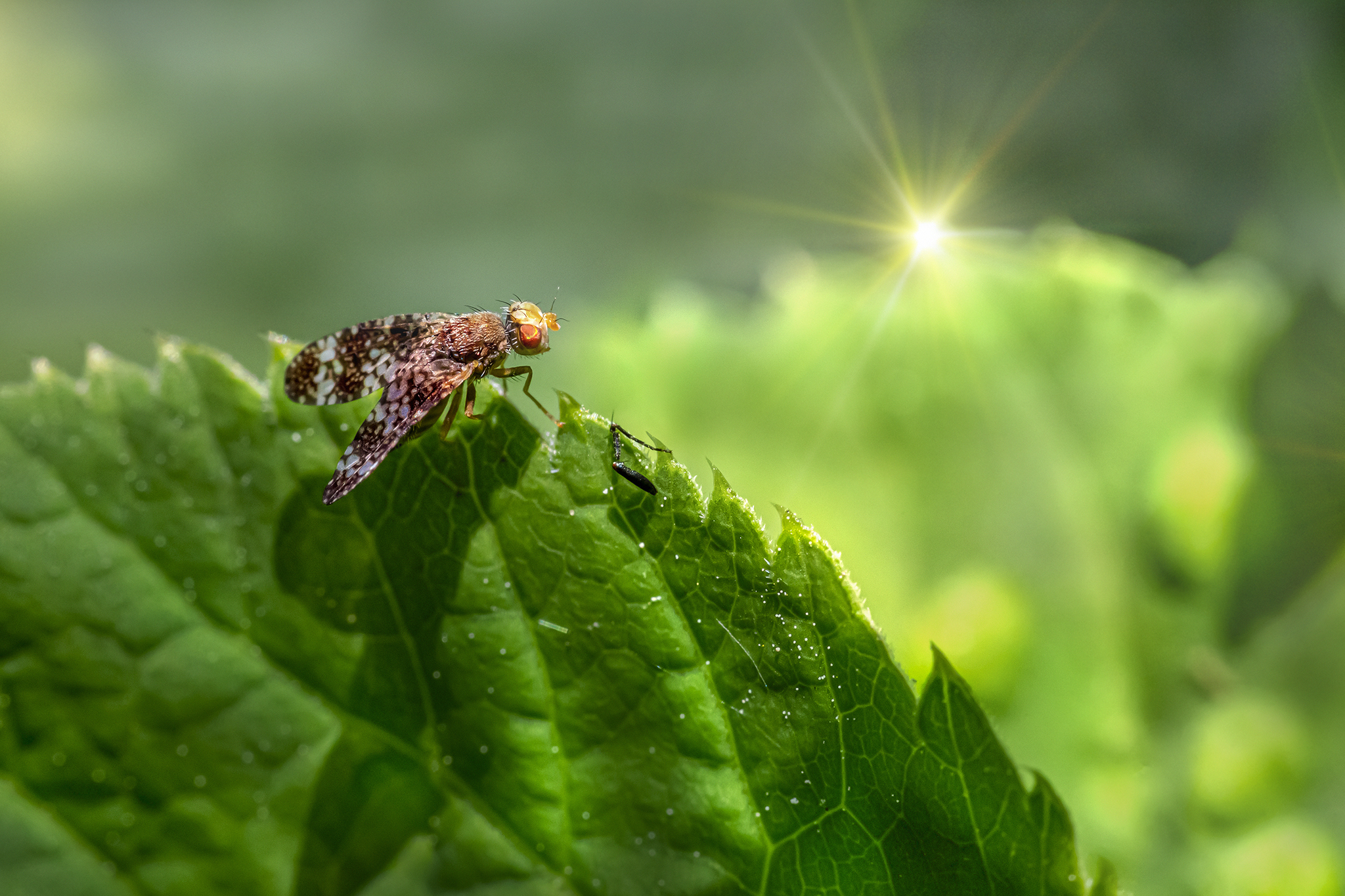The Spotted March Fly (Trypetoptera punctulata) is a distinctive species of fly known for its striking spotted appearance. Here are some key details about this fly species:
Appearance
- Size: Spotted March Flies are medium-sized, with adults typically measuring about 6-10 mm (0.2-0.4 inches) in length.
- Coloration: They have a characteristic body coloration that includes a dark brown or black body with white or yellowish spots or markings on the thorax and abdomen.
- Wings: Their wings are clear with distinct dark spots or patterns, which help in identification. The wings are often held in a V-shape when at rest.
- Antennae: The antennae are relatively short and stout, typical of many fly species.
Habitat
- Range: Trypetoptera punctulata is found in various parts of Europe, North America, and Asia, inhabiting temperate regions.
- Environment: They are commonly found in marshes, wetlands, and other moist environments, often near water bodies such as ponds, streams, and rivers. They can also be seen in grassy meadows and forested areas.
Behavior
- Feeding: Adults primarily feed on nectar and other plant exudates. They are often seen visiting flowers and other plants to feed.
- Mating: Mating typically occurs in the spring or early summer. Males can sometimes be seen engaging in territorial displays to attract females.
- Larvae: The larvae develop in moist soil or decaying organic matter, where they feed on detritus and small invertebrates. They play a role in breaking down organic matter and contributing to soil health.
Life Cycle
- Eggs: Females lay their eggs in moist soil or decaying vegetation, where the larvae will have access to food sources.
- Larvae: The larval stage involves several molts as they grow and develop. The larvae are typically slender and segmented, adapted for a life spent burrowing through soil or organic matter.
- Pupation: After completing their larval development, they pupate in the soil. The pupal stage is a resting phase during which the larva transforms into an adult fly.
- Adults: Adult flies emerge from the pupae ready to mate and continue the life cycle.
Adaptations
- Camouflage: The spotted coloration of both the adults and larvae helps them blend into their environments, providing some protection from predators.
- Feeding Structures: Their mouthparts are adapted for feeding on plant nectar and other liquid food sources.
Ecological Role
- Pollination: By visiting flowers to feed on nectar, Spotted March Flies contribute to the pollination of various plant species.
- Decomposition: The larvae play a crucial role in decomposing organic matter, thereby contributing to nutrient cycling in the ecosystem.
- Prey: They serve as prey for a variety of predators, including birds, spiders, and other insects.
Conservation
- Status: Trypetoptera punctulata is not currently considered endangered. They are relatively common within their preferred habitats.
- Threats: Habitat destruction and pollution can impact local populations, particularly in areas where wetland habitats are being drained or degraded.
- Conservation Efforts: Protecting wetland habitats and maintaining healthy ecosystems are essential for the conservation of this species. Efforts to reduce pollution and preserve natural landscapes contribute to their well-being.
The Spotted March Fly (Trypetoptera punctulata) is an important species within its ecosystem, contributing to pollination and decomposition processes. Its distinctive appearance and ecological roles make it a valuable part of the biodiversity in its native habitats.
Views: 7
Subscribe to the newsletter:
